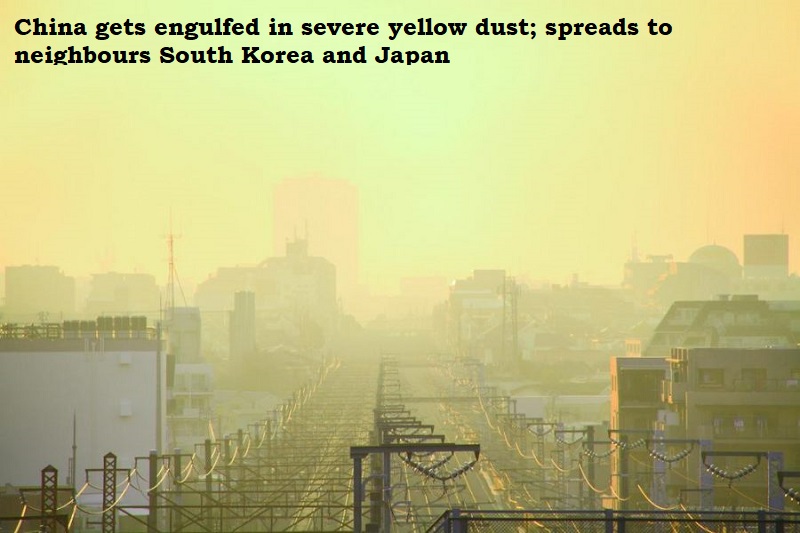
For over a month now, China has been experiencing a severe yellow dust storm that has now spread to its neighbors, South Korea and Japan. As a result, people in these countries are wearing face masks and hooded jackets to protect themselves from the contaminated air. This yearly occurrence originates from the Gobi desert, which borders China and Mongolia, and these winds typically reach the Korean peninsula, but this is the first time they have reached Japan.
Besides poor visibility and aggravated air pollution, these winds also bring a higher risk of respiratory problems. The dust contains industrial pollutants, viruses, fungi, bacteria, and heavy metals that can damage crops, soil, and respiratory health. The yellow dust has enveloped 18 provinces of China, causing poor air quality and a gloomy atmosphere.
AirKorea, which is managed by South Korea’s environment ministry, has warned that these fine dust particles could reach “very unhealthy” levels in Seoul this week. Although sandstorms have been increasing in frequency since the 1960s, they have been more severe this year, causing the skies to turn yellow and leaving cars, bikes, and houses coated in dust.
The concentration of fine dust particles, or PM 10, has been alarming in both China and South Korea. During the most recent sandstorm, PM 10 levels in the Chinese capital were 46.2 times the World Health Organization’s guideline value. In Seoul, PM 10 levels were double the government threshold to qualify as “very bad” for health, and in the city of Ulsan, it was even higher. One particle is smaller in diameter than a human hair, and the health risks from inhaling PM 10 particles are immediate.
Many people have expressed their frustration about the situation, with some stating that there is no realistic way to avoid the yellow dust, and it has become part of their lives. Others have reported feeling unhappy and depressed due to the poor weather conditions, which affect their ability to go outside and enjoy a sunny day.
Chinese authorities have said that sandstorms are increasing in frequency due to rising temperatures and lower precipitation in the Gobi wilderness. Videos and images of the yellow dust storm have been widely shared on social media platforms such as Weibo, raising awareness about the harmful effects of the sandstorms on human health and the environment.

Post Your Comments